Hoping to determine likely puppy coat colour? Or curious as to why your dog is the colour it is? Then what you need is a simple guide to canine coat colour genetics.
Why is my dog black?
Why is my dog yellow when its parents were both black?
You probably have some vague inkling that it is all to do with genetics. And you’d be right!
Let’s take a more detailed look.
Affiliate Disclaimer
1 Genetics – a Simple Outline
When the idea of writing this post popped into my head the other day I had a fuzzy recollection of my high school biology lessons and Mad Mendel the Monk.
He wasn’t mad, of course. He was a very intelligent man.
But our biology teacher knew back then what I only really came to realise many years later – our memories like things that are humorous or exaggerated. And Mad Mendel the Monk was far more memorable than Gregor Mendel the scientist!
If your first thought wasn’t Mendel it was probably Darwin. We’ll have a quick look at the work of each of them below.
We’ll then move on to a very simple overview of genetic terms. Try not to switch off when you see the terminology! We need it for reference when we move on to the determination of canine coat colour.
1.1 Gregor Mendel
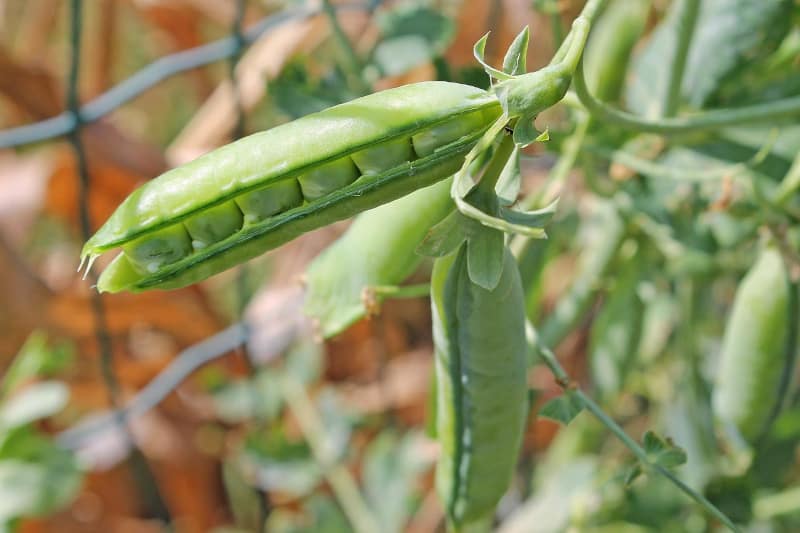
Gregor Mendel (1822-1884) conducted experiments on pea plants and his findings established many of the rules of heredity (the passing on, through reproduction, of traits from parents to their offspring).
This study of heredity in biology is known as genetics.
When looking at seed colour Mendel observed that cross-breeding yellow peas with green peas always resulted in all of the produced seeds being yellow. However, in the following generation, some of the seeds were again green.
This observation resulted in Mendel describing certain traits as being either dominant or recessive. In the pea colour example, the yellow colour is dominant and the green colour recessive.
These factors that Mendel referred to are now known as genes.
Sadly for Mendel, even though it was published, the influence of his work was not recognised until it was re-visited by others many years later.
1.2 Charles Darwin

Charles Darwin (1809-1882) is more well known than Mendel and many people will know of his most famous piece of work “On The Origin of Species“.
The work discusses evolutionary biology and introduces the key concept of natural selection. After reading it the philosopher Herbert Spencer coined the phrase “survival of the fittest”.
The book was a summary of his observations made during a trip around the world on HMS Beagle.
The trip incorporated the Galapagos Islands off the coast of Ecuador. Here he observed finches on the islands which were similar but had small differences in beak shape. This allowed them to feed on different food types.
Darwin suggested that the birds all originally belonged to one population but had slowly changed over time to suit the habitats that they found themselves in. And that this had happened as a result of passing traits from one generation to the next.
1.3 DNA and Other Terminology

You’ve probably used the acronym DNA before but do you know what it stands for?
DeoxyriboNucleic Acid, that’s what.
And what is it?
It’s a molecule with a double-stranded helix structure (like the picture above). Each strand has smaller structures on it, called bases, which link to the corresponding bases on the opposite strand.
Chromosomes are thin strands of DNA. They are sub-divided into genes.
It is the gene that carries the necessary information for determining a particular characteristic.
Alleles come in pairs and are variations of the same gene. For example, puppy coat colour is the gene and black, brown, and yellow are the alleles. They are usually denoted with letters, for example, a and b.
Which of the alleles is given effect depends upon the concept that Mendel described – whether they are dominant or recessive. Dominant alleles are written with a capital letter and recessive ones with a lowercase letter.
So, let’s consider allele pairs of AA, Aa, and aa.
- AA will express A
- Aa will also express A because A is dominant over a
- aa will express a
If you struggle to comprehend the dominant and recessive aspects of genes, think of it in terms of a Strictly Come Dancing analogy:
- The characteristic being considered, eg dog colour, is the dance-off for the two bottom-placed dancing partnerships
- The alleles are the four judges in a tie-break situation, 2 votes for each partnership
- The capital letter allele is the head judge with the casting vote
Whenever reproduction takes place one allele factor is taken from each parent at random. For example, if one parent has an AA combination and the other parent has Aa then the first parent will always provide an A but the second will sometimes provide an A and sometimes an a.
2 Canine Coat Colour Genetics
OK, so we have a very simplistic overview of genetics. Let’s see how this relates to canine coat colour.
Specifically, I’m going to look at the colour of Labradors (because my dog, Harvey, is a Labrador). However, the principles will be the same for all dogs.
2.1 Pigments
Despite the huge variation in canine coat colour, there are actually only two pigments:
- Eumelanin
- Phaeomelanin
These are both forms of melanin. You’ve probably come across this term in reference to the colour of human skin.
Although each of the pigments has a default colour they can be modified.
So, Eumelanin is black by default but its variations include brown, pale brown, and grey. And Phaeomelanin is red by default but its variations include orange, cream, and yellow.
In addition, white hair can be produced when cells do not produce any pigment at all. Not only that, but melanin is not always produced at a constant rate – so there may even be different colours along the length of a single hair!
2.2 Alleles Revisited
Remember alleles?
Well, for Labradors there are two genes impacting dog colour. The first has four alleles and the second has two.
The genes are:
- Tyrosinase-related protein 1 (TYPR1) – determines whether black or chocolate
- Melanocortin 1 receptor (MC1R) – determines whether yellow
Of the four alleles for TYPR1, one is for black (referred to simply as B) and the other three are for chocolate (referred to as b).
The black (B) allele is dominant to the chocolate (b) alleles.
So BB and Bb combinations will produce a black puppy. And bb combinations will produce chocolate puppies.

The two common MC1R alleles for Labradors are black/brown (referred to as E) and yellow (referred to as e).
The yellow (e) allele is recessive to the black/chocolate (E) allele.

2.3 Rolling the Genetic Dice
OK, now that we have the theory behind us, let’s take a look at possible combinations in determining canine coat colour.
We know that there are two aspects to consider:
- Will the dog be yellow? (the E and e alleles)
- If it isn’t yellow, will the dog be black or chocolate? (the B and b alleles)
The possible combinations are summarised in the image below:
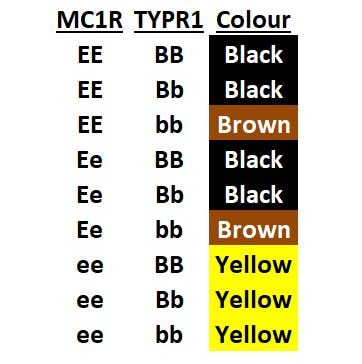
The easiest way to look at it is like this:
- Is the MC1R combination ee?
- If so, the coat is yellow. No need to look any further.
- If not, is the TYPR1 combination bb?
- If so, the coat is chocolate.
- If not, the coat is black.
Both Parents are Yellow
We know that the yellow allele is recessive.
Therefore, each parent must have an ee allele combination (because if there was an E it would be dominant).
And if that is the case, the only possible combination for the puppies is also ee.
So, all of the puppies will be yellow.
Both Parents are Chocolate
Well, if two yellow parents always produce yellow puppies then two chocolate parents must always produce chocolate puppies, right?
Wrong.
Let’s look at the alleles to see why.
For the parents not to be yellow the MC1R alleles must include at least one uppercase E (which is dominant to the e needed for yellow dogs).
And for the dogs not to be black the TYPR1 alleles must be lowercase b only.
If you are struggling to visualise these allele letter combinations the chart below may help. Parent one, across the top, either has the EEbb or the Eebb allele combinations. And parent two has the same.
Remember, if there is an uppercase E allele in the MC1R gene then there can be no yellow puppies. And in this scenario, all possible combinations of the TYPR1 alleles result in the bb outcome meaning that if the puppies are not yellow they will be chocolate and not black.
Note that the Eebb possible combination for each of the parents means that a puppy could have eebb. The absence of the uppercase E means that two chocolate parents can produce a yellow puppy.
Isn’t genetics incredible?!
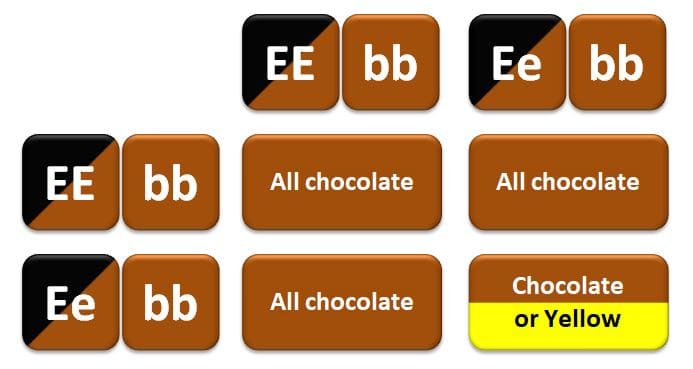
Both Parents are Black
OK, let’s now look at the scenario where both parents have black coats.
We know that for the TYPR1 gene the alleles are not ee (because then the dog’s coat would be yellow).
And we know that for the MC1R gene the alleles are not bb (because then the dog’s coat would be chocolate).
So, we have to have at least one uppercase E and at least one uppercase B.
That gives us: EEBB, EEBb, EeBB, and EeBb potential combinations for each of the parents.
What’s interesting about these combinations is that, as with the case of the two chocolate parents above, it is possible, because of the inclusion of the lowercase e and lowercase b alleles, to produce both chocolate and yellow puppies in addition to the expected black puppies.
There are, in fact, 16 possible litter outcomes from the potential allele combinations of the parents:
- 9 where the puppies are all black
- 3 where the puppies may be either black or chocolate
- 3 where the puppies may be either black or yellow
- And 1 where the puppies may be black, chocolate, or yellow!
Puppy is Yellow
Here is a photo of Harvey.
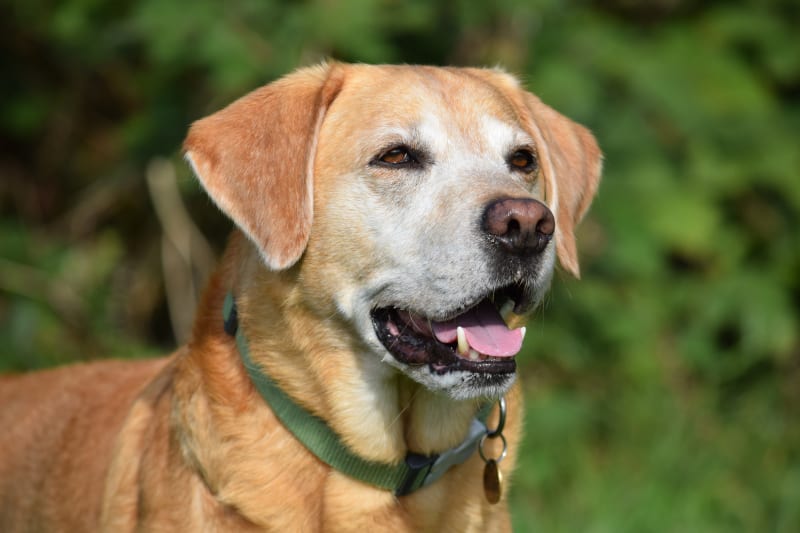
As you can see, Harvey is neither black nor chocolate coloured. He is, therefore, in the Labrador world of colour, yellow.
He actually has a reddish tinge to his coat and this, as you’ll recall from above, is because the Phaeomelanin pigment has been only slightly modified from the default red. In contrast, many Labradors have a coat that is yellow because the modification is greater.
He also has some white on his muzzle. He doesn’t care – he says it makes him look distinguished!
So, Harvey has the ee allele combination.
What does that tell us about the colour of his parents?
Well, frankly, not a lot!
He has received one e allele from each parent. However, the parent could have a combination of ee (and also be yellow) or Ee (and so be black or chocolate).
One Parent Black and One Parent Yellow
Now, I happen to know that one of Harvey’s parents was black and one was yellow.
What does that tell us?
The black parent must have the Ee combination (the E cancelling out the recessive e that was passed to Harvey). It must also have either a BB or Bb combination to make it black rather than chocolate.
The yellow parent must have the ee combination. It could have BB, Bb, or bb for TYPR1.
So, what colours are we likely to see in a litter of puppies from these parents?
The yellow parent will always pass an e for MC1R. The black parent will pass E 50% of the time and e 50% of the time. This means that, on average, 50% of the puppies will be yellow and 50% will be black or chocolate.
This is how the puppies in Harvey’s litter were coloured (I think its 4 black and 3 yellow):

3 Genetic Testing
So, we’ve looked at the theory of how canine coat colour is determined.
That’s a fair point.
And for most owners, and many breeders, simply understanding the theory (so that you aren’t too surprised when a yellow puppy appears in a litter from two black parents) is all that they need.
What if you really want to know?
Well, there is the option of genetic testing.
There seem to be lots of these tests available these days. Ask your vet. Ask your favourite search engine. Or go with the ever-reliable Amazon – this Wisdom Panel Essential DNA Test seems to be highly rated.
4 Canine Coat Colour Conundrums
Coat Colour Skipping Generations
The more astute reader (yes, I’m talking to you!) will have noticed that the presence of recessive characteristics allows them to skip one, or more, generations.
For example, if a dog has a EeBb allele combination it will be black (the dominant E masks the recessive e and the dominant B masks the recessive b).
That dog might have a litter with an EEBB dog and produce puppies that also have the recessive e and b alleles. They, too, will be black.
This could carry on for many generations until, eventually, one EeBb dog has a litter with another EeBb dog. When that happens there is a possibility that the recessive alleles from each will combine.
And, as if by magic, two lines of dogs which have been solely black for many generations suddenly produce a litter that has yellow and chocolate puppies!
So, if you find yourself in this scenario, don’t automatically assume that your dog has been having illicit liaisons – there may be a genetic explanation!
Coat Colour and Health
Merle
There is a genetic pattern in a dog’s coat which causes patches of colour to appear. This is known as the Merle gene. Double merle combinations can result in puppies that suffer from deafness, blindness, and other issues.
In the UK the Kennel Club has banned the deliberate breeding of double merles to minimise the risk of such things happening.
Chocolate
A 2018 study by Paul McGreevy et al has also shown that when it comes to Labradors, those with a Chocolate coat have a shorter life expectancy (an average of 10.7 years compared to an average of 12.1 years for non-chocolate coloured dogs).
“… if chocolate coat colour is desired in litters, breeders may be motivated to breed from certain lines that may inadvertently increase the ensuing puppies’ predisposition to certain diseases. It is possible that a more restricted population gene pool has a higher carriage rate of the disease risk genes …”
Paul McGreevy
In other words, it isn’t the coat colour itself that is physically causing the issue. It is the fact that a chocolate coat is a recessive genetic trait and therefore there is a much smaller breeding population to choose from (and less diversity increases the risk of passing on undesirable factors).
Designer Dogs
There is a concern that unscrupulous breeders are seeking to breed dogs with unusual colouring purely for profit motives and with no consideration for the health of the dogs.
As with the chocolate Labradors above, this invariably necessitates the use of recessive gene dog combinations and the downsides that this can involve. A typical example in recent years has been the rise in popularity of the blue French Bulldog.
5 Frequently Asked Questions
Here are some FAQs related to [this blog topic]
Canine coat colour is determined by the dog’s DNA. It takes its DNA from its parents. The DNA contains the blueprint for the dog’s genetic characteristics, including coat colour. The make-up of the DNA determines the pigmentation used in the cells of the dog’s fur. This includes taking into account which characteristics are dominant and which are recessive. This is a tricky one to answer! All canine coat colours are basically derived from two main genes; one determining the amount of black pigment and one determining the amount of red pigment. The black gene range includes brown. The red gene range includes tan, orange, and yellow. The most common coat colour will, necessarily, reflect what are the most popular dogs. So, the most common are black, brown, and white. These are reflected in popular breeds like Labradors, German Shepherds, French Bulldogs, Poodles, and Cocker Spaniels. No, they can’t. For a dog to be yellow the MC1R alleles must both be the recessive “e” (rather than the dominant “E”) variant. Consequently, only these recessive versions can be passed to any offspring and so all puppies will also be yellow. Interestingly, though, two black dogs can, if their MC1R alleles are “Ee”, have yellow puppies. Yes, they can. It all depends on the allele combinations for the MC1R gene (which determines the extent of red pigment) and the TYPR1 gene (which determines the extent of black pigment). So, two black Labradors could have a litter of puppies including black, chocolate, and yellow ones. Yes, it can (and often does). Some coat colours (like chocolate in Labradors) only happen when there is a combination of recessive genetic information from both parents. However, if the combination is of one dominant and one recessive characteristic then even though the recessive factor won’t be visible it can still be passed on to the next generation. What Determines the Coat Colour of a Dog?
What is the Most Common Coat Colour in Dogs?
Can Two Yellow Dogs Have Black Puppies?
Can a Litter of Puppies by Different Colours?
Can Dog Coat Colour Skip a Generation?
6 Acknowledgements
Image acknowledgements:
And …
7 The End
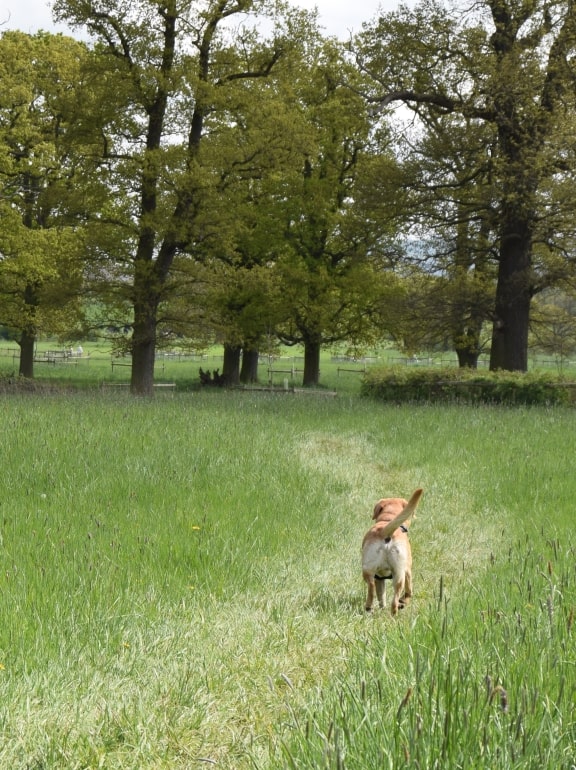
I hope that you’ve enjoyed this post.
Feel free to navigate around the site to see if there is anything else that may be of interest to you.
If you liked this post please share it. Thank you 🙂
If you’d like a heads-up when the next post is issued sign-up to the Richie’s Room Newsletter.
And, if you’d like to add a comment that would be great too – you can do that below. In fact, I’d be interested to hear what type of dog you have and what coat colour it has.

As I have dogs I always find your posts interesting and helpful for taking care of my dogs. Thank you for sharing all this useful information.
Lauren
Hi Lauren. I’m glad that you found this post (and others!) to be interesting. Thanks for reading.
How fascinating. Really interesting Richie.
As you know I’m a dog owner myself. I never thought much into the reasoning behind coat colours. Really informative read.
Hi Damion. It is fascinating, isn’t it? I’m pleased that you found it informative.
This is interesting. I’m going to get my own dog so soon and this is very informative. Thank you for sharing!
Hi. I’m glad that you found the post both interesting and informative. I wish you luck with your new dog 🙂
Very detailed and informative post. Absolutely fascinating. I have shared it with my daughter who has a puppy.
Hi Belinda. Thank you very much for your positive feedback (and for sharing the link with your daughter).
This is so interesting, I’ve not put much thought into it before but was good to learn the science around it!
Corinne x
Hi Corinne. Thanks very much for your comment. Glad you enjoyed the post.
Oh this is such an interesting post. I didn’t know much about what a dog’s coat color could mean. Thanks so much for sharing!
Thank you, Charity, for your kind words.
Goodness me this was a detailed and informative post! I didn’t know about any of this. I have a cross-breed and he’s white as white can be. I don’t know who his parents were though!
Hi Jenny. Glad to have enlightened you 🙂 Does your dog have blue eyes? Or eyes of different colours (to each other)?
Wow, Richie, that was the most detailed post I’ve read in ages! I’m not going to pretend to understand all the combinations but I love your Strictly Come Dancing analogy, that makes perfect sense. And Harvey is a gorgeous colour 🙂
Hi Lisa. I like a detailed post – both writing and reading 🙂 Harvey says Thank You 😉
Its not something I’ve ever really thought about before but I really enjoyed learning about just how it works. Great post!
Thanks for your comment, Kelly, I’m glad that you enjoyed the post.
This is such an informative post. Genetics is a fascinating topic, and we thoroughly enjoyed this post. Thank you for sharing.
Thanks very much for your feedback. Genetics is fascinating, isn’t it? I’m glad that you enjoyed the post.
This post is packed full of interesting information and I loved reading about the science behind it.
Hi. I’m glad that you enjoyed the post – thanks for the feedback.
This was really interesting and informative. I never would have thought all these info. Thank you for sharing!
Thanks, Eri, I’m pleased that you enjoyed the post.
This is such a interesting and super educational post! I’ve got a silver dappled dachshund so it’s amazing to read about genetics and how a colouring of a dog works. Thank you so much for sharing this post with us. Xo
Elle – ellegracedeveson.com
Hi Elle, thanks very much for your feedback. Genetics is a fascinating subject – must be a great job for those who have a career in it.